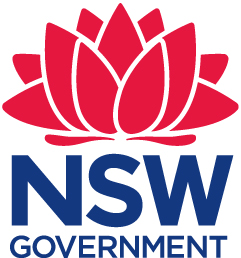Subfamily Cicadellinae: Tribe Cicadellini
 Ishidaella latomarginata (Distant)
Ishidaella latomarginata (Distant)
The Cicadellini are characterised by the swollen frons extending a short distance onto the vertex. The Australian species are medium sized or larger, elongate insects. The most common species are those in the genus Ishidaella, formerly placed in the genus Kolla but separated from that genus by Young (1986). These are medium sized leafhoppers with blue-black tegmina and yellow heads with various patterns of black.
Australia also has three species of Cofana, with C. spectra (known as the white leafhopper) recorded on a number of economic grass species overseas including rice, barley, wheat, sugarcane and sorghum although few reports indicate that any significant damage was caused to those hosts (Young 1979).
No species of the subfamily Cicadellinae has yet been recorded from New Zealand.
Indonesia has a rich and diverse fauna of Cicadellini, many described in the prodigious publications on this tribe by D.A. Young (1968, 1977, 1979, 1986).
The economically important sharpshooters, which don't occur in Australia, belong to this subfamily although most are in the tribe Proconiini which is distributed in the Western Hemisphere (Young 1968). Some sharpshooters are vectors of Pierce's disease of grapevines, which is found on the west coast of the USA and poses a quarantine threat to Australia's valuable wine industry.
- Species of Cicadellini known to occur in Australia
- Species of Cicadellini known to occur in eastern Indonesia and New Guinea
- Return to previous key page (cica19.htm)
- Return to previous key page (cica71.htm)
- Restart key
Species of Cicadellini known to occur in Australia
Genus Cofana MelicharCofana Melichar 1926: 345 |
|
Cofana perkinsi (Kirkaldy) Tettigonia perkinsi Kirkaldy 1906:
319 [update: image added 30.v.2011] |
Qld, NT, PNG |
Cofana spectra (Distant), the white leafhopper Tettigonia albida Signoret 1853:
663, preoccuped by Tettigonia albida Walker (1851) |
Qld, NT, Lord [NSW, WA updates: 7.xi.2011] |
Cofana unimaculata (Signoret) Tettigonia unimaculata Signoret 1854:
26 Known hosts: Oryza sativa (Poaceae) (Wilson and Claridge 1991) |
Qld, NT, PNG, Fiji, Guadalcanal, New Caledonia, Africa, Oriental region |
Genus Conoguinula YoungConoguinula Young 1986: 532 |
|
Conoguinula coeruleopennis (Fabricius) Cicada coeruleopennis Fabricius 1803:
73 |
Qld, PNG, Indonesia |
Genus Ishidaella MatsumuraIshidaella Matsumura 1912: 41 |
|
Ishidaella albomarginata (Signoret) Tettigonia albomarginata Signoret 1853:
347 |
Qld, NSW, Tas |
Ishidaella anemolua (Kirkaldy) Tettigonia anemolua Kirkaldy 1906:
322 |
Qld |
Ishidaella angustata (Evans) Cicadella angustata Evans 1938a:
3 |
NSW, Vic, Tas, WA |
Ishidaella latomarginata (Distant) Tettigoniella latomarginata Distant 1917a:
190 |
Qld, NSW |
Ishidaella naomiae (Evans) Cicadella naomiae Evans 1938a:
3 Note: The specimen shown here is the holotype of Cicadella markei Evans 1938a, synonymised with I. naomiae (Evans) by Evans (1966). [update: WA added 31.v.2011] |
Tas, WA |
Ishidaella pettimolua (Kirkaldy) Tettigonia pettimolua Kirkaldy 1906:
321 [update: image added 30.i.2009] |
NSW |
Ishidaella quadrata (Walker) Tettigonia quadrata Walker 1851:
781 Note: This species was unknown to Evans (1966) although he recognised it as belonging to the species he placed together in Kolla. Young (1986) transferred those species to Ishidaella but simply listed this species as unknown. Based on Evans' (1966) placement of the species, Day and Fletcher (1994) placed it in Ishidaella but it is clearly a nomen dubium. |
Tas |
Ishidaella richmondensis (Distant) Tettigoniella richmondensis Distant 1917a:
191 |
Qld, NSW |
Ishidaella tumida (Evans) Kolla tumida Evans 1966:
148 |
NSW |
Species of doubtful presence in Australia |
|
Conogonia coerulescens (Fabricius) Cicada coerulescens Fabricius 1803:
74 Note: This species was recorded from "New Holland" by Fabricius (1803) but was not mentioned by Evans (1966) nor Evans (1977). Young (1986) lists the distribution as being restricted to PNG and raises doubts about the Australian record. Australian records from the early 19th Century are notoriously unreliable since specimens were often unlabelled or documented as having been collected on a voyage to Australia. Such specimens may have been collected in Indonesia or even South Africa on the voyage back to Europe. |
